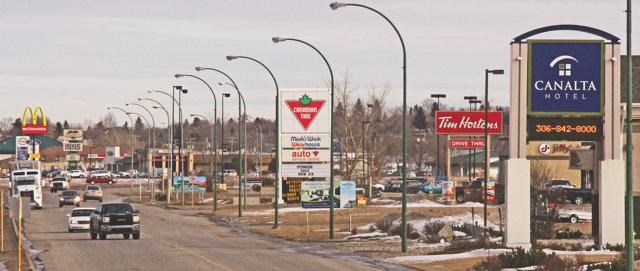WEYBURN – A new report on radon levels in Weyburn found that more than half of the homes tested (55 per cent) had radon levels above the Canadian guideline, further emphasizing the need for all residents in Saskatchewan to test for radon.
Over 100 residents from Weyburn participated in the national “100 Radon Test Kit Challenge”, which to date has provided over 10,000 tests to communities across Canada from coast to coast.
“We were pleased to see so many residents take the time to address this health risk” said Pam Warkentin, Project Manager at Take Action on Radon. “People often forget how important prevention is when it comes to their health, testing for radon and reducing high levels is a very easy step to take to limit cancer risks.”
Radon is a radioactive soil gas that can build to dangerous levels in indoor air, making it the leading cause of lung cancer in non-smokers. Radon exposure also increases the chance of getting lung cancer if you are a smoker.
Province-wide the uranium-rich geology of the soil in Saskatchewan provides a high potential for elevated radon levels in homes. Odourless and colourless, the only way to know the level of radon gas in your home is to test for it.
“Radon is a well-established human carcinogen and testing and reducing radon levels is an important way to reduce lung cancer risk,” said Dr. Anne-Marie Nicol, a researcher in the Faculty of Health Sciences at Simon Fraser University. “Most people’s radon exposure comes from the time they spend at home, so more time at home leads to greater radon exposure overall.”
“On average, 58 Canadians will die from lung cancer every day, making it the leading cause of cancer death in Canada,” said Lynn Murad, Cancer Prevention Specialist, Canadian Cancer Society. “It’s important that Canadians know they can control their risk from radon by testing their homes and reducing their exposure.”
The results for Weyburn come as no surprise to Warkentin, who is also the executive Director of the Canadian Association of Radon Scientists and Technicians.
“Historically, we’ve known that Saskatchewan has high radon levels, but these results reinforce the importance for residents to not only test their homes for radon, but also to take action to lower their radon levels to protect themselves and their families from lung cancer.”
Solutions are readily available for residents who discover their indoor radon levels are dangerously high. Saskatchewan’s Renovation Tax Credit will provide some financial assistance and LungSask also provides financial support through their Caring Breath program.
Radon mitigation systems can be installed in any home and reduce radon levels by an average of over 90 per cent. The work involved can generally be completed within a day by a certified professional.
Canada’s national radon certification program (C-NRPP) provides a searchable list of radon professionals on their website at .
The 100 Radon Test Kit Challenge program is a nation-wide research and awareness project supported by the Take Action on Radon program. The Challenge provides free test kits to communities who want to know more about their radon levels.
Participants each receive a confidential individual radon test in addition to the publicly available Community Report, summarizing the results of the community testing online here:
Residents who didn’t get a chance to participate but would like to order a test kit can learn more at www.takeactiononradon.ca/test.





